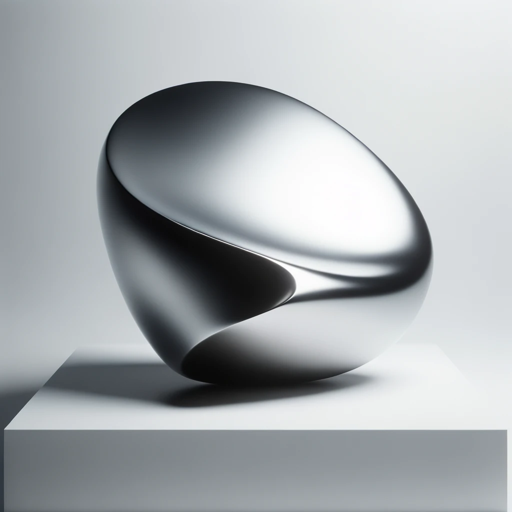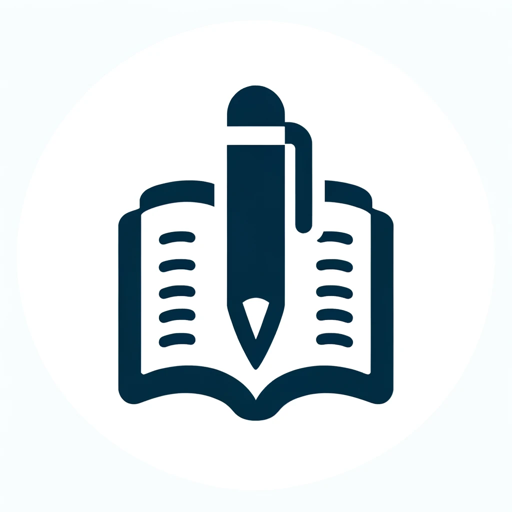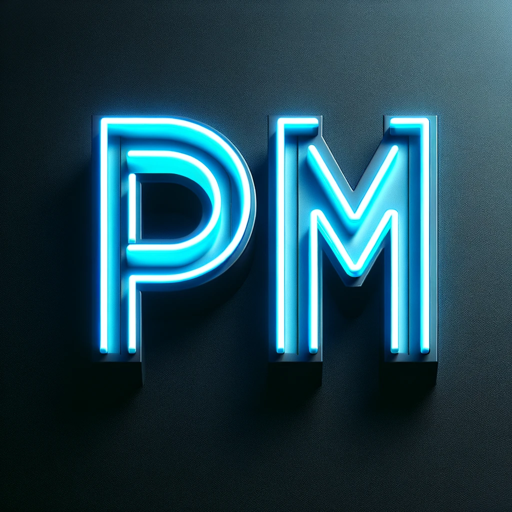3D Print Doctor-AI-powered 3D printing troubleshooting.
AI-driven solutions for 3D printing challenges.
What's wrong with this print?
How can I fix this warping?
Why did my print fail?
Solutions for 3D print errors?
Related Tools
Load More
3D Render
From ideas to lifelike 3D renders.

3D-Designer
Design and create custom 3D printables without a mechanical design software.

STL File Creator + Researcher + Advanced Modeling
Simplifies 3D model creation with basic Python tools and precise research.

DoctorGPT
Provides evidence-based medical information and advice.

3D Print STL Finder
I’m here to assist you as an expert in 3D printing with a talent for finding STL files online. Give me any description, and I’ll locate the corresponding STL file.

Impresión 3D a tu servicio
Busca lo que quieras de Impresión 3D, Parámetros, Modelos 3D, Primeros pasos o Nivel Experto. Y ya sabes... Contrasta.
20.0 / 5 (200 votes)
Introduction to 3D Print Doctor
3D Print Doctor is a specialized AI designed to assist users in navigating the complexities of 3D printing. It acts as a virtual consultant, offering guidance on a wide range of 3D printing topics, from troubleshooting technical issues to optimizing print settings for specific materials and designs. The tool is tailored to cater to both beginners who need foundational advice and advanced users seeking to fine-tune their processes. For example, a user struggling with print layer adhesion can receive step-by-step instructions to diagnose and resolve the issue, while an advanced user might seek advice on optimizing infill patterns for strength versus material efficiency.

Key Functions of 3D Print Doctor
Troubleshooting Print Issues
Example
A user encounters warping at the corners of their print. 3D Print Doctor can guide the user through adjusting bed temperature, calibrating the Z-offset, or using appropriate adhesives or print surfaces to reduce warping.
Scenario
A hobbyist 3D printing a large flat part on a non-heated bed may experience edge lifting. The tool helps identify environmental factors like ambient temperature and suggests adjustments to bed adhesion methods to solve the problem.
Optimizing Print Settings
Example
An engineer needs to improve the surface finish of a prototype. 3D Print Doctor recommends lowering the layer height, adjusting the print speed, and tweaking the retraction settings to reduce stringing and improve overall quality.
Scenario
During the production of a mechanical part requiring smooth movement, the engineer uses the tool to refine settings for the best possible finish, ensuring the part fits seamlessly into the final assembly.
Material and Design Consultation
Example
A designer is unsure whether PLA or PETG would be better for a functional part that needs to withstand moderate heat. 3D Print Doctor compares material properties and advises on design modifications to account for the different shrinkage rates and layer bonding strengths.
Scenario
In an educational setting, a teacher using a 3D printer for class projects consults the tool to choose the best material for printing a model that will be used in a heated environment, ensuring it won't deform under use.
Ideal Users of 3D Print Doctor
Hobbyists and Beginners
These users benefit from the tool’s ability to explain basic concepts, solve common issues, and provide guidance on improving print quality. The step-by-step instructions are particularly valuable for those new to the process, helping them build confidence and competence in 3D printing.
Advanced Users and Professionals
Professionals, including engineers, designers, and educators, can leverage 3D Print Doctor to refine their printing techniques, choose appropriate materials, and optimize designs for specific applications. This group benefits from the in-depth technical advice and the ability to solve more complex challenges that require nuanced adjustments and a deep understanding of material science.

Guidelines for Using 3D Print Doctor
Visit aichatonline.org for a free trial without login, also no need for ChatGPT Plus.
Simply navigate to the website to start using 3D Print Doctor immediately. There's no need for any sign-up or paid subscription to access the basic features.
Familiarize yourself with common 3D printing issues.
Before using the tool, it's helpful to have a general understanding of common problems like layer shifting, stringing, or bed adhesion issues to make the most out of the troubleshooting advice.
Pose specific questions about your 3D printing issues.
Ask targeted questions to get precise and actionable advice. For example, 'How do I fix under-extrusion on my Ender 3?' will yield more useful results than a general query.
Review the provided solutions and implement them step-by-step.
Carefully follow the instructions or troubleshooting steps provided. The solutions are often broken down into manageable parts to make implementation easier.
Request further assistance if needed.
If the initial advice doesn’t fully resolve your issue, you can ask follow-up questions for more detailed guidance. The tool is designed to support iterative problem-solving.
Try other advanced and practical GPTs
Article Assistant
AI-powered writing made easy.

HoonGPT
AI-Powered Hoon Learning and Development

科技文章翻译
AI-powered translations for technical texts

AI使用助手 by 花生
AI-Powered Assistant for All Needs

Mind Game
AI-powered interactive storytelling adventure.

Tweet X-aminer
AI-powered Twitter insights for better engagement.

PRD Maker
AI-powered PRD creation made simple

算命先生
Unlock Your Future with AI

GodGPT
AI insights with a divine touch

Synthia 😋🌟
Spice Up Your Chats with AI

DAD
AI-powered fatherly wisdom for all.

Anxiety Coach ❤️🔥
AI-powered solutions for anxiety relief

- Optimization
- Troubleshooting
- Support
- Guidance
- Diagnostics
Frequently Asked Questions about 3D Print Doctor
What kind of 3D printing issues can 3D Print Doctor help with?
3D Print Doctor can assist with a wide range of issues, including under-extrusion, stringing, layer shifting, poor bed adhesion, and more. It offers both quick fixes and detailed troubleshooting steps based on your specific problem.
Do I need any prior knowledge of 3D printing to use 3D Print Doctor?
No prior knowledge is required, but having a basic understanding of your 3D printer and common issues can enhance your experience. The tool is designed to be user-friendly and can cater to both beginners and experienced users.
How does 3D Print Doctor differ from other troubleshooting resources?
3D Print Doctor provides personalized, step-by-step guidance tailored to your specific problem, unlike general forums or guides. It combines technical expertise with an intuitive interface, making it easier to resolve issues effectively.
Can 3D Print Doctor help with printer-specific issues?
Yes, 3D Print Doctor can provide advice tailored to specific 3D printer models, such as Ender 3, Prusa i3 MK3, or Ultimaker. Make sure to include your printer model in your query for the most accurate advice.
Is 3D Print Doctor accessible on mobile devices?
Yes, 3D Print Doctor is fully accessible on mobile devices. The interface is optimized for both desktop and mobile use, so you can troubleshoot your 3D printing issues on the go.